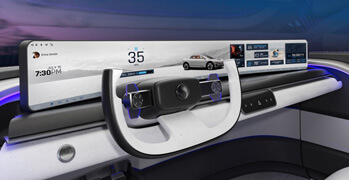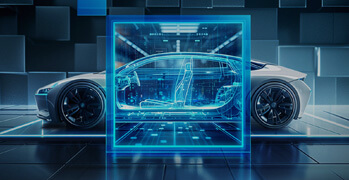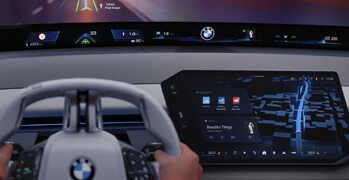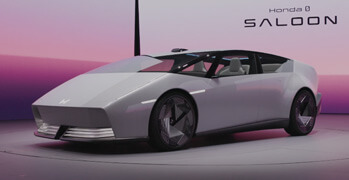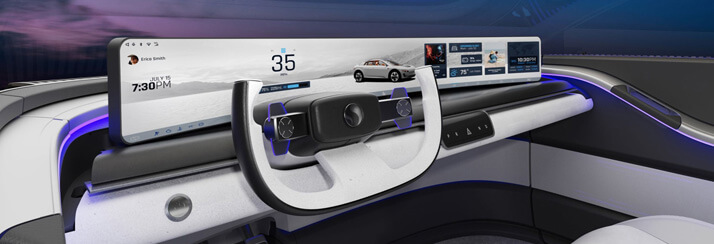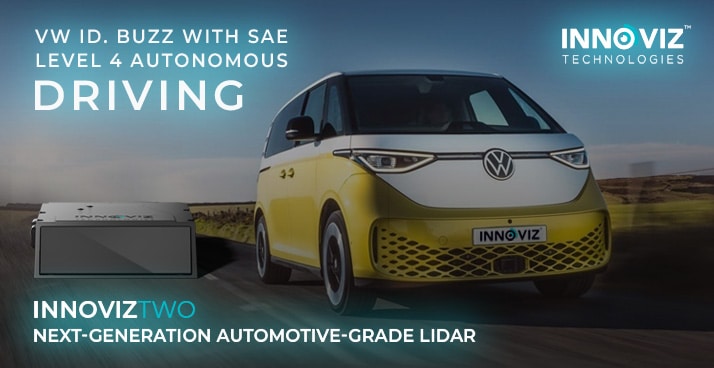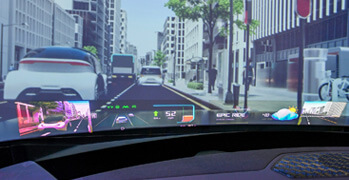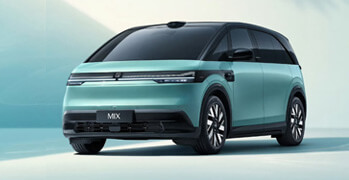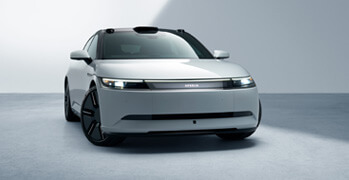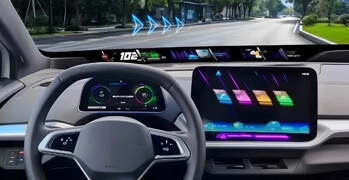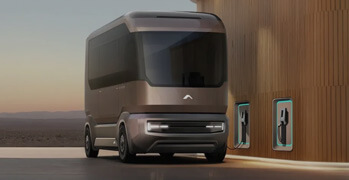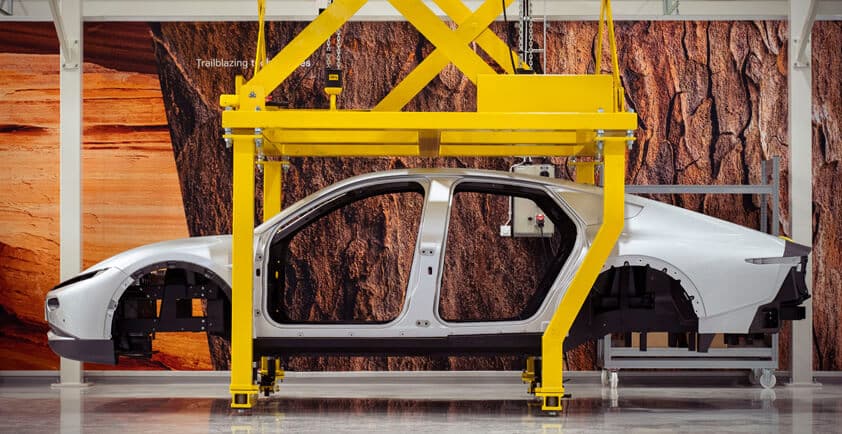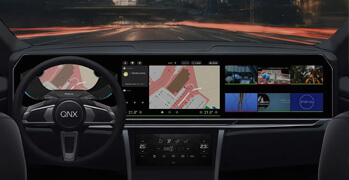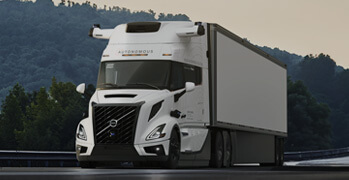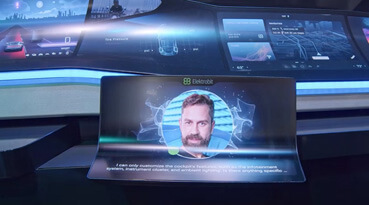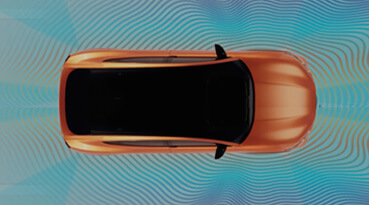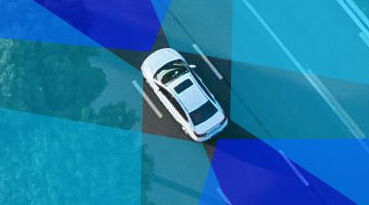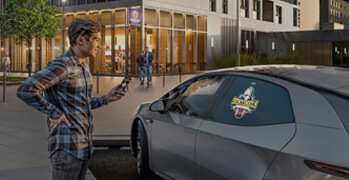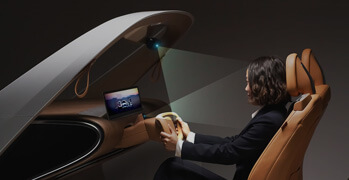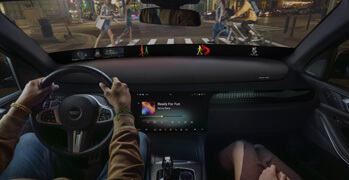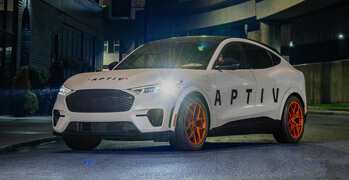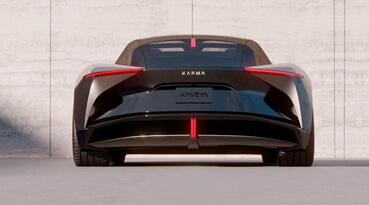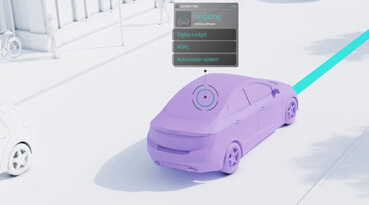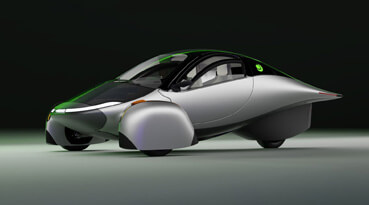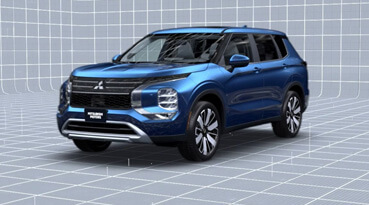
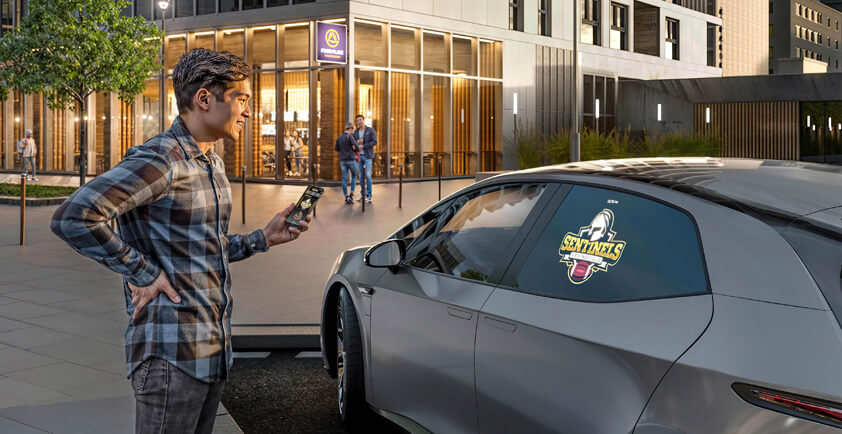
WINDOW PROJECTION IMPRESSIVELY DISPLAYS CONTENT ON THE VEHICLE’S SIDE WINDOWS
>> Visually impressive projection of content onto rear side windows
>> Highly efficient projector technology minimizes required installation space
>> Continental supplies technology, seamless system integration and comprehensive software components such as the eTravel.companion
>> Seamless integration of relevant and personalized content thanks to the banbutsu platform and the WPP network
Las Vegas, USA. Continental presented its window projection solution for the very first time at the Consumer Electronics Show (CES) in Las Vegas, USA. The technology projects content onto the vehicle’s rear side windows, which is then visible from the outside. When the vehicle is parked, it can communicate directly with its environment and display important information such as the charge level of an electric vehicle or the logo of the person’s favorite sports club. The content can be easily personalized. To display content on the side windows, the system uses a powerful mini projector, a side window that can be fully darkened electrically to act as a projection surface, and intelligent software.
"With our Window Projection solution, we can project content in impressive quality onto the vehicle’s side windows. This can be personalized to the driver’s lifestyle, strengthening their bond with the brand," explains Pavel Prouza, head of User Experience at Continental.
Outstanding image quality with compact projection technology
A smart projection screen is responsible for the optical output. When the system is activated, the window is fully darkened electrically to ensure optimum image display. A space-saving projection unit installed in the roof lining of the vehicle projects the content onto the side window. The projection, which is visible from the outside, impresses by displaying the content in extremely high resolution directly on the windowpane. What is more, the ultra-efficient mini projector requires less than half a liter of installation space.
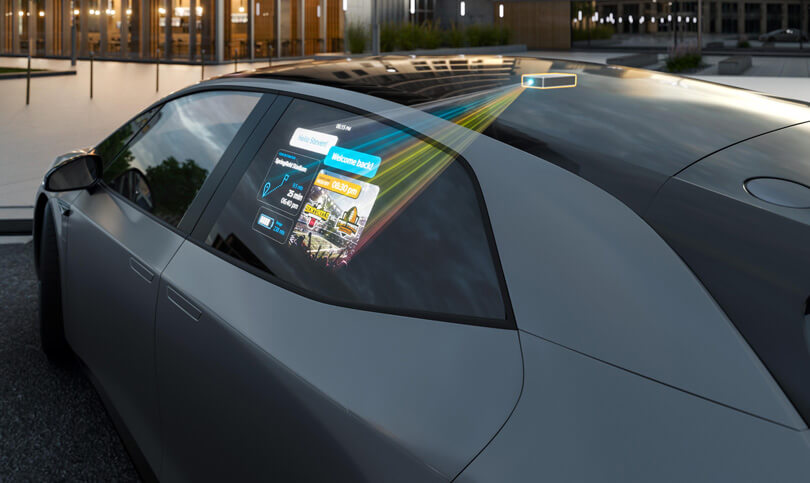

"The system can be easily integrated into the roof lining as it requires very little space. Our engineers are already working on additional measures to make future generations of the system even more compact," explains Prouza.
Content that is always relevant: smart personalization with the eTravel.companion as the interface to the banbutsu digital ecosystem
The eTravel.companion is integrated into the Window Projection solution as a software component. The AI-based travel companion uses data on driving habits, geographical and weather data as well as additional information from the vehicle’s sensors to create new user experiences. To develop the software, Continental collaborated with platform provider banbutsu, whose digital ecosystem provides the interface for highly personalized and context-based content. Based on data, learned preferences and the current situation, the software generates suggestions in real time, which can be displayed on the rear windows before getting into the vehicle.
For example, the vehicle is therefore able to recognize if the driver is on their way to the stadium to watch their favorite team play. The intelligent software then suggests displaying the club’s logo together with other customizations on the side windows. The solution can also display the vehicle’s charge level as well as route information. The driver therefore benefits from interesting and personalized suggestions, such as charging stops along the route, before even getting in.
"With our tailored recommendations and the simple integration of new partners and content, our platform provides new user experiences that are both personal and relevant. Together with Continental, we are bringing technology into the vehicle," explains Michael Wolters, managing director of banbutsu.
CONTINENTAL AND AURORA PRESENT SCALABLE AUTONOMOUS TRUCK SYSTEM
>> Progress in the development and production of a Level 4 autonomous system
>> Design and architecture of Aurora Driver hardware and fallback system completed
>> Presentation of hardware and industrial fallback system
>> Start of production planned for 2027
Development of the commercially scalable autonomous truck system in the USA is progressing well. At CES 2025, Continental and Aurora presented the current development stage of the technology on a truck prototype featuring the Aurora Driver system. The two companies have been working together in an exclusive partnership since 2023. Aurora is providing the Aurora Driver software, which enables Level 4 autonomous driving (SAE), while Continental is supplying the entire hardware and fallback system.
With the Level 4 autonomous trucks, driverless freight transport from hub to hub on freeways is expected to be possible starting in 2027. The scalable, driverless system is intended to help meet the growing transportation demand on long-distance routes: trucks will be able to operate virtually around the clock, are expected to achieve fuel savings of around 10 percent compared with trucks with human drivers, and will reach their destination up to three times faster on long-haul routes.
Continental will manage the entire life cycle of the system’s hardware – from the production of individual components through to decommissioning. During operation, Continental’s fallback system will ensure that the driverless trucks are precisely maneuvered to a safe location in the unlikely event of a failure in the primary system or if, for example, a sensor is damaged or fails.
Continental and Aurora are making autonomous truck systems commercially scalable.
